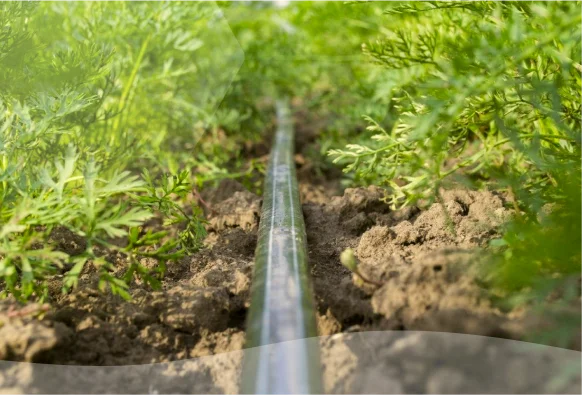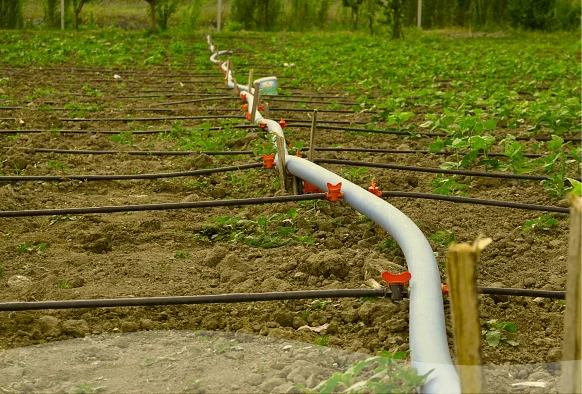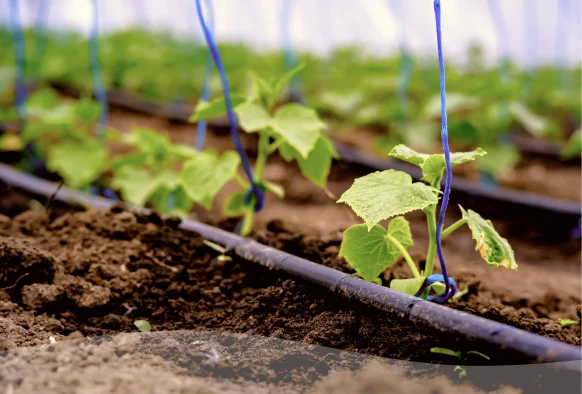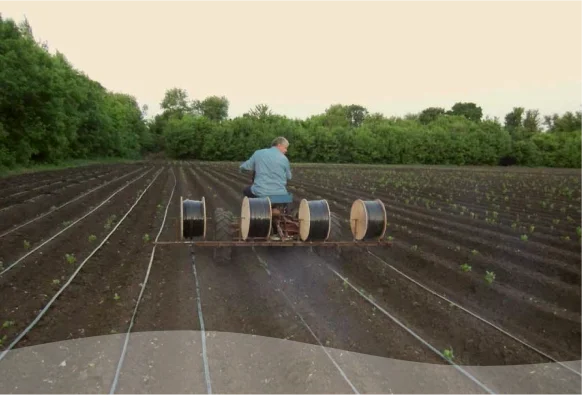Drip irrigation
Drip irrigation
An irrigation method in which water is supplied directly to the root zone of cultivated plants in controlled small portions using dripper dispensers.
Allows significant savings in water and other resources (fertilizers, labor, energy and piping). Drip irrigation also provides other benefits (earlier harvest, prevention of soil erosion, reduced chance of disease and weed spread).
Initially it became widespread in greenhouse production, but today it is already widely used in open ground for growing vegetables, fruits and grapes, as well as landscaping, incl. vertical gardens.
The greatest effect of using drip irrigation is in areas of insufficient moisture.

Technology and device
- Water capture unit
- Filtration node
- Fertigation unit (fertigation is the use of fertilizers and nutrients along with irrigation water)
- Main pipeline
- Distribution pipeline and drip lines
Drip lines are divided into drip tubes and drip tapes.

Drip tubes
They are seamless polyethylene tubes with a diameter of 16 mm or 20 mm, with a wall thickness from 0.6 mm to 2 mm.
The tubes can be manufactured with or without built-in droppers.
The tubes can be manufactured with or without built-in droppers.
Tubes with built-in droppers are produced with an interval between them established by the manufacturer.
The most common are tubes with distances between emitters of 25, 30, 50 and 100 cm. The main distinguishing feature of drip tubes from drip tapes is the cross-sectional shape and wall thickness. The tubes have a large wall thickness and maintain a circular cross-section both during watering and in the period between water supplies to the tube.

Drip tapes
They are thin-walled hollow products of small diameter with water outlet droppers (emitters), through which moisture is supplied to the root zone of each plant.
Depending on the type of droppers, the following types of tape are distinguished:
Slotted - a labyrinthine channel is built along the entire length of the tape, in which thin slot-like holes are cut at equal distances for pouring out water.
Such products are suitable for mechanized installation and supply water evenly, and new developments provide a self-cleaning mechanism.
Emitter - flat hard labyrinth droppers are built into the tape separately from each other with a given pitch between them.
Due to the creation of turbulent flows in them, such products self-clean during the watering process, but the degree of protection against clogging may vary from manufacturer to manufacturer.
Built-in droppers are:
1. Compensated (water is discharged evenly, regardless of the slope of the area, the length of the irrigation row, or the pressure in the system)
2. Uncompensated (water consumption depends on the topography, length of irrigation, liquid pressure). An analogue of the tape is a drip tube, the wall of which is several times thicker. This option is more expensive and suitable for longer use (up to 6-7 years)


Main settings
Diameter
The standard and most common is a tape with a diameter of 16 mm, for which you can easily select additional fittings and use it to create a practical irrigation network.
22 mm tape is used less frequently, and its use is advisable for very large farms with large areas - the length of irrigated rows with such products can reach 400-450 m with acceptable irrigation quality.
Wall thickness
This indicator is measured in mils (1 mil-0.025 mm) and determines the mechanical strength of the tape and its durability. The thinnest products are 5-6 mil, which are used for one season and then disposed of.
7-8 mil tape is universal and more resistant to damage, suitable for reuse if you handle it carefully, use purified water, and at the end of the season wash, dry and carefully store.
Thick-walled products include 10-15 mil products, which have proven themselves in conditions of rocky soils and an increased risk of damage by animals, insects, birds or soil cultivation tools.
UV and chemical resistance
Important properties affecting the durability of the tape. If fertigation is planned, then the resistance of the products to salts of macro- and microelements will be an additional advantage.
Type of built-in emitters (droppers)
Slotted or built-in (compensated and uncompensated) droppers.
Emitter performance
Uncompensated emitters, as a rule, have a low productivity, which is 1.0-1.6 l/hour. Such irrigation rates are optimal for most crops and soils, but the requirements for purification of irrigation water are high, since thin culverts easily become clogged.
For compensated drippers, the water flow rate can be 2-3.8 l/hour, and they are most often used on sandy soils with high absorbency for crops that require intensive watering.
Emitter Distance
The step between droppers can be from 10 to 40 cm or more. This parameter must be taken into account taking into account the planting scheme, the crop’s water needs and soil type.
Tapes with emitters located at a distance of 10-20 cm from each other are chosen for continuous sowing crops (greens, onions, lettuce, etc.). The soil is wetted in a continuous strip.
In addition, such products are suitable for light sandy soils, as well as in cases where high water consumption per linear meter is required. A distance between emitters of 30 cm satisfies the needs of most row crops and some berry crops.
Operating pressure
Manufacturers indicate lower and upper pressure thresholds that must be observed during operation.
For belts with average wall thickness and water consumption, they average 0.2-0.3 and 0.8-1.1 atm, respectively.
For products with higher operational and technical parameters, the minimum is 0.4-0.8 atm, and the maximum is about 1.8-2.0.